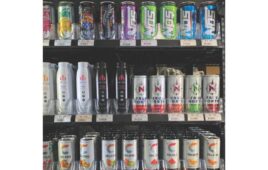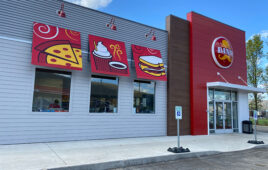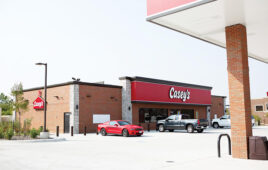 Just as mobile apps have replaced punch cards in wallets and plastic cards on key rings, loyalty programs have evolved from simple “buy 10, get one free” models to sophisticated marketing programs that are able to determine when people will visit, how often and what they’ll buy.
Just as mobile apps have replaced punch cards in wallets and plastic cards on key rings, loyalty programs have evolved from simple “buy 10, get one free” models to sophisticated marketing programs that are able to determine when people will visit, how often and what they’ll buy.
Personalized offers are a key differentiator. Personalization and the need for data-driven individualized reward member experiences have been important pieces of the ‘loyalty’ conversation for years; however, Bond U.S.’s “The Loyalty Report 2019” pointed out “a striking gap” exists between intent and actions. It found only two in 10 rewards members were satisfied with the level of personalization in their loyalty program. In other words, brands aren’t implementing the data they collect effectively or at all. “Effective communication drives the level of personalization within a program,” the report said.
Research firm Nielsen, in its “7 Important Factors That Will Shape The Future of Convenience Retail” report, noted meeting customers where they are and understanding what they want is vital to not only the success of a loyalty program, but of a brand.
“C-store loyalty plans will mature past implementation of simple reward programs,” the report said. “Advanced programs will emerge, appealing to the emotional side of the consumer through enjoyable experiences.”
Perfecting Personalization
Today, many convenience stores are expanding the use of personalization and customization in their rewards programs and working to better communicate with customers through mobile apps, as well as online and in-store.
“We’ve ramped up our efforts to look at check-level detail and designed 1:1 marketing offers,” said Anita Bichsel, senior marketing manager at Break Time Convenience Stores, which operates 74 stores in Missouri and Arkansas. “We’ve had campaigns that have resulted in 25% increases in customer spend.”

But to get there, you have to start by building a program. In 2016, Break Time began working with a third-party partner to build a program that moved away from the legacy punch card program focused on fuel, drinks and sandwiches. It launched MyRewards in 2017 with fuel rewards, which it still uses as the enticement to join, offering 10 cents off per gallon for the first month.
“Even if that discount is the only reason they register that card, during that first 30 days, we can (entice) them in other areas,” she said. “They can recognize other advantages to being in the program.”
By expanding the offerings to include both fuel and in-store purchases, offering in-store exclusives as partnerships with vendors, enlisting employees to use and promote the program, and integrating the program into its app, Break Time not only saw increases at its pumps, but now has more than 132,000 registered MyTime Rewards users in less than three years.
Mobile Communication
That activity mirrors what’s happening across the industry. According to PDI’s “2019 C-Store Shopper Report,” nearly three-fourths of U.S. c-store retailers
surveyed said they have a loyalty program, and 47% use personalized messages in programs. Customers also want ease of communication, with 52% of members wanting to use a mobile app for tracking or redeeming rewards. It also showed that two-thirds of members engage with the program at least once a week.
Last month, Ankeny, Iowa-based Casey’s General Stores introduced Casey’s Rewards, its first loyalty program. The Casey’s mobile app is at the center of the rewards program, where customers can order pizza, gain access to special offers and discounts, and track points and pizza purchases. The new rewards program offers members at Casey’s more than 2,000 c-stores in 16 states the ability to earn points on everyday purchases and redeem them for Casey’s Cash, fuel discounts or donate to a local school of their choice.

Customers can earn 10 points for every dollar they spend on eligible purchases online, in-store or over the phone, plus five points per gallon of gas purchased. For every 10 large pizzas purchased, they get one free.
Customers who are less inclined to use a mobile app can instead opt to enter their phone number to earn points in-store, at the pump or when they call to order.
For Break Time, offering ease of communication meant integrating the loyalty program into its app, allowing customers to have three ways to see and use rewards points.
By using target and control campaigns, Break Time is able to target many different kinds of customers. It plans to increase 1:1 offers this year, especially in foodservice. And it aims to entice customers to stay at the top rewards levels.
“We have some customers who visit us 50, 60, 70 times a month,” Bichsel said. “The top rewards level holds a great deal of importance to our customers. They do not want to fall below 20 visits per month and lose their status and those rewards.”

Source: Bond U.S., “The Loyalty Report 2019”




